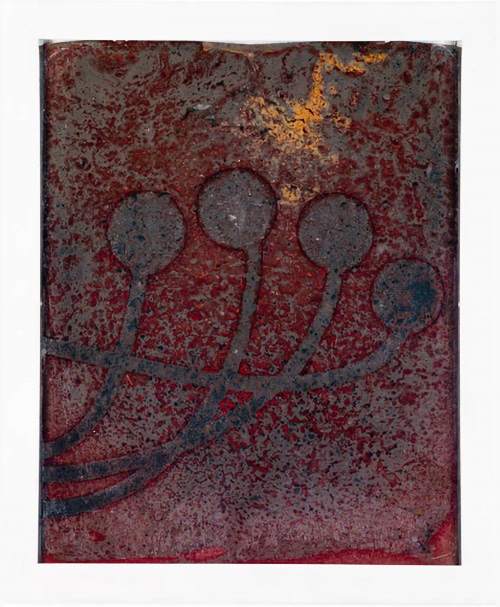 Eduardo Kac is best known for his glowing bunny but he has produced a wide range of works over the years. A quick online summary is available. The issues Kac's bio-art raises are certainly similar to those addressed on this blog. His work usually makes me queasy and I find it hard to assess the reasons for this. One is, I suspect, the blatant sensationalism and commericalism of his venture. Shades of Damien Hirst. That's an easy trap for a critic to fall into though... I don't feel it is a good reason not to be interested in his art.
Eduardo Kac is best known for his glowing bunny but he has produced a wide range of works over the years. A quick online summary is available. The issues Kac's bio-art raises are certainly similar to those addressed on this blog. His work usually makes me queasy and I find it hard to assess the reasons for this. One is, I suspect, the blatant sensationalism and commericalism of his venture. Shades of Damien Hirst. That's an easy trap for a critic to fall into though... I don't feel it is a good reason not to be interested in his art.Other problems I have with Kac's work are probably more important. They are not conceptually very interesting and they are not aesthetic objects of the kind I value. Splicing this and that code into organisms to see what emerges seems to me really silly and uncreative. Feeble! The results (e.g. a rabbit or a plant growing on a chess board) are aesthetically lame.
I would be more interested if his work addressed the ways in which people have engaged with genetics over millenia, for instance, through traditional breeding as applied to crops and domestic animals or livestock. Whilst there is less showmanship in engineering an apple than a glowing bunny, drawing attention to the engineering we all depend upon for our survival is more subtle and disarming than attempting to shock people with a rabbit. Why make a big deal about modern genetics? We have been manipulating genes for at least 10,000 years.
Image credit: E. Kac, Clairvoyance, biotope, 19 X 23 ", 2006
A relatively recent work of Kac's, Specimen of Secrecy About Marvelous Discoveries which was first exhibited at the Singapore Biennale in 2006, is I think more interesting than genetically tagging rabbits. His website explains,
"Specimen of Secrecy about Marvelous Discoveries is a series of works comprised of what Kac calls "biotopes", that is, living pieces that change during the exhibition in response to internal metabolism and environmental conditions. Each of Kac's biotopes is literally a self-sustaining ecology comprised of thousands of very small living beings in a medium of earth, water, and other materials. The artist orchestrates the metabolism of these organisms in order to produce his constantly-evolving living works."Judging only by the online still imagery, the works look quite beautiful in a traditional, painterly, textural kind of a way. From what little I know of Kac's work this is a first. I'd love to see the works first-hand and in time-lapse to make a more informed remark. For how long are they "self-sustaining"?
The beauty of these ecosystems lies also in their conceptual underpinnings, in the pathos of an ecosystem out of context. Severed from connections with other organisms*, these displaced ecosystems have such a hopelessness about them. Rendering ecosystems as trapped living displays on a gallery's stark walls furthers our separation from nature and renders it a passive system independent of ourselves and available for capture and manipulation. Of course I expect this to be part of Kac's intention.
Is it okay to present nature in this way in order to raise our consciousness of the perspective we (or at least our culture) adopts? Probably. It seems little different to growing a garden or keeping a pet, neither of which offends my sensibilities and neither of which attempts to raise environmental concerns. Maybe this is a work by Kac I can actually appreciate!
*In the absence of any explanation, I seriously doubt substantial micro-organism exchange between the environment and these works. Please comment if you know more than I do about this. Are visitors asked to inhale and exhale onto the works?




No comments:
Post a Comment